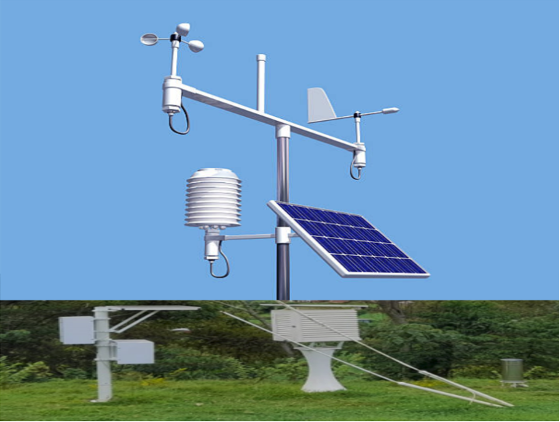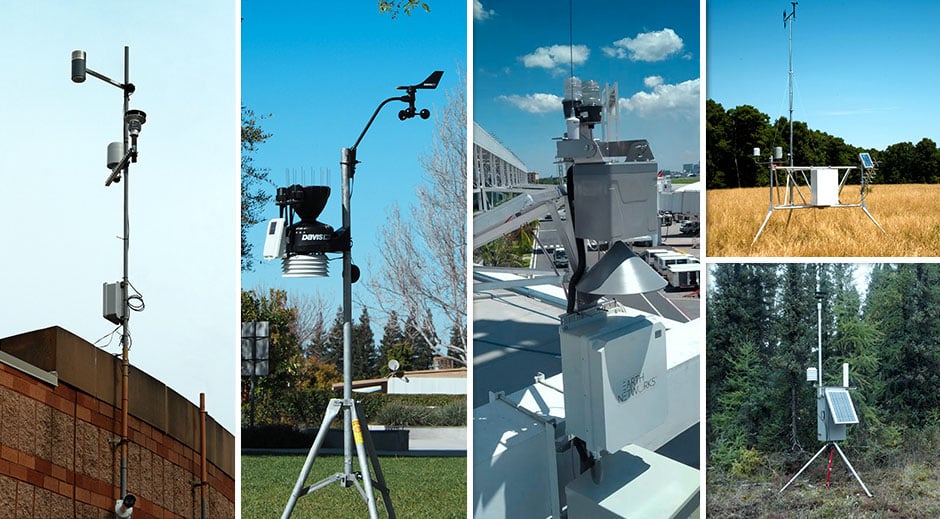Vital Tips for Establishing and Adjusting Your New Weather Stations
Checking Out the Various Types of Expert Climate Stations for Accurate Data Collection
When it comes to choosing the appropriate weather station for information collection, the market provides a range of options customized to different requirements and settings. Let's check out the nuances of these expert weather condition terminals to grasp their unique performances and establish the best fit for details data collection demands.
Digital Weather Terminals
In the realm of atmospheric instrumentation, digital weather condition terminals stand out as innovative devices for specific data collection and evaluation. These sophisticated stations are outfitted with sensing units that capture a large range of weather condition parameters such as temperature, moisture, barometric pressure, wind rate, and direction. The information accumulated by digital climate terminals is transmitted wirelessly to a central console or a computer system for real-time surveillance and evaluation.
One of the key advantages of electronic weather condition stations is their capability to supply high-resolution information with accuracy and reliability. This degree of accuracy is essential for numerous applications, consisting of agriculture, aeronautics, emergency, and study reaction. Electronic weather terminals usually come with software program that enables users to picture the data in various styles like graphes and graphs, promoting easier analysis and decision-making.
Wireless Climate Stations
Building on the capacities of electronic weather condition terminals, cordless weather stations use improved benefit and flexibility in information transmission and tracking. By utilizing wireless technology, these weather terminals remove the requirement for difficult wired connections, enabling very easy installment in different places. The wireless attribute makes it possible for real-time information surveillance from remote areas, supplying meteorologists and weather condition fanatics with immediate accessibility to important info.
Wireless climate stations generally include sensing units that gather data on temperature level, humidity, barometric pressure, wind speed, and direction. These sensors wirelessly send the data to a central console or receiver, where it is processed and displayed for evaluation. Some progressed cordless climate terminals can also attach to the internet, enabling individuals to access their weather condition information remotely through mobile phones or computer systems.

Prosumer Weather Condition Stations
What distinguishes Prosumer Climate Stations from standard consumer-grade weather stations? Prosumer Weather Stations bridge the gap in between consumer-grade and professional-grade devices, providing more advanced functions and greater accuracy than typical home weather stations. These terminals are made for weather fanatics, amateur meteorologists, and local business that call for more accurate data than what customer versions can offer.
Prosumer Weather condition Stations usually include a larger variety of sensors to determine added atmospheric criteria such as UV index, fallen leave dampness, and dirt dampness. They likewise tend to have a greater level of toughness and dependability, making them suitable for lasting exterior usage in numerous ecological problems.


Industrial Climate Terminals
Industrial Climate Stations, likewise referred to as meteorological monitoring systems, are specialized tools developed for robust and precise climate my blog data collection in industrial settings. These terminals are tailored to fulfill the unique demands of industrial operations where precise climate details is essential for safety and security, performance, and decision-making procedures.
Industrial weather condition stations are geared up with advanced sensors that can determine a large range of atmospheric criteria such as temperature level, humidity, wind speed and direction, barometric pressure, and rainfall (Weather Stations). These stations are typically ruggedly developed to stand up to severe ecological conditions commonly located in commercial settings
One secret function of commercial climate stations is their capacity to give real-time information surveillance and analysis. This permits commercial centers to prepare for weather-related dangers, optimize procedures based upon weather, and make sure the safety of employees and devices. Furthermore, industrial weather stations can be incorporated into existing commercial control systems for smooth data administration and automation.
Mobile Weather Terminals
In comparison to stationary commercial climate stations, portable weather condition terminals offer versatility and flexibility for on-the-go data collection in numerous ecological settings. These compact units are created to be quickly carried to various places, making them excellent for field research, emergency reaction scenarios, farming, building and construction sites, and outside occasions.
Portable weather terminals typically include sensing units for measuring specifications such as temperature level, humidity, barometric pressure, wind speed, and wind instructions. Some progressed designs may also include added sensors for monitoring rainfall, solar radiation, and UV levels. In spite of their small size, mobile weather stations are capable of offering reliable and precise data similar to that of bigger, taken care of terminals.
One of the crucial advantages of portable weather condition stations is their quick release and ease of arrangement. They can be operational within minutes, permitting fast information collection and evaluation. Additionally, these stations can be set to send real-time data wirelessly, making it possible for individuals to monitor and analyze environmental problems remotely. Overall, portable climate stations are invaluable devices for my site professionals needing mobile, accurate, and timely climate information in varied setups.
Final Thought
In final thought, professional weather condition terminals come in different kinds such as electronic, cordless, prosumer, commercial, and mobile. By comprehending the differences between these types of weather terminals, individuals can make educated choices to guarantee they get the most reputable and precise weather data for their objectives.
Weather condition))))
Structure on the capacities of digital climate terminals, cordless climate stations use boosted comfort and adaptability in information transmission and monitoring. Some advanced wireless weather condition terminals can even connect to the internet, enabling customers to access their climate data remotely via smartphones or computer systems.
Prosumer Climate Stations bridge the void between professional-grade and consumer-grade devices, providing more advanced attributes and higher accuracy than typical home weather condition terminals. Weather Stations. In general, mobile weather stations are vital tools for experts requiring portable, precise, and prompt climate information in diverse setups
By comprehending the distinctions between these types of weather condition stations, people can make enlightened choices to ensure they get the most dependable and precise climate information for their objectives.